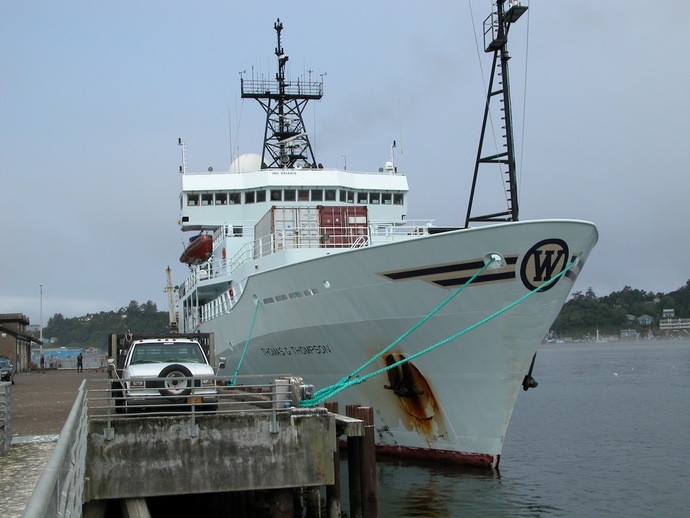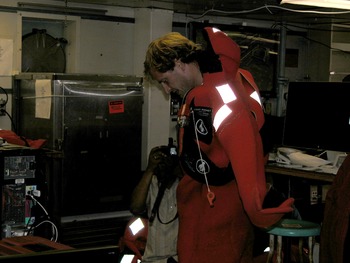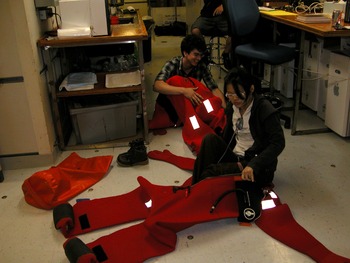 |
| Giora Proskurowski |
This expedition has the relatively uncommon occurrence of being divided into two parts, or “legs.” The first leg of this voyage focused on high-resolution mapping and imaging of sites on the continental shelf and continental slope. We’ve just embarked on the second leg and are currently heading out to Axial Volcano on the Juan de Fuca Ridge—the closest mid-ocean ridge spreading center to the continental US—located 280 miles off the Oregon Coast. The Thompson was docked at the Hatfield Marine Science Center in Yaquina Bay, Newport, OR for just 16 hours, but this brief connection to land allowed for a major reshuffling of scientists, students, and equipment. Plus, this break in the action gave the crew on the first leg a chance to catch their breath and briefly “recharge.”
There is a slightly awkward period on multiple-leg cruises during which newcomers must get their sea legs while trying to integrate into the scientific community of the “battle-tested” veterans from the previous leg. Fortunately the group of students and scientists staying on from the first leg were extremely welcoming, and although they were exhausted and only wanted to get some sleep, they made sure we newcomers were taken care of. I am one of the new science team members to join the ship in Newport, and although I have been on the Thompson before, and have sailed with more than a few of the scientists and Jason crew members, every expedition is different. Thus, while I share in the excitement of a new mission with new people, I am familiar with the surroundings and expectations; my transition to life on the Thompson is much easier than for those who have never been to sea.
We pushed off the dock in the fog last night at 2300h and by breakfast we were almost 100 miles off the Oregon coast. So far, the transit has been extremely smooth--the motion of the boat is barely perceptible, just a slight pitching with almost no roll. We have had 10-15 knot winds out of the NNW, and the sun made a rare—if brief—appearance early this afternoon. For those on the first leg, today was largely spent catching up on sleep and any lingering work; for the newcomers, there were several orientation meetings to get familiar with the ship, the crew, and the science plan. Our estimated time of arrival at Axial is 2300h tonight, at which time the Jason team will begin a 6-hour calibration of the vehicle’s navigation equipment. If all goes as planned, Jason will be on the seafloor tomorrow morning, and the exciting work--one mile beneath the surface of the ocean, at one of the world’s most active undersea volcanoes--will begin in earnest.
Giora Proskurowski, UW




